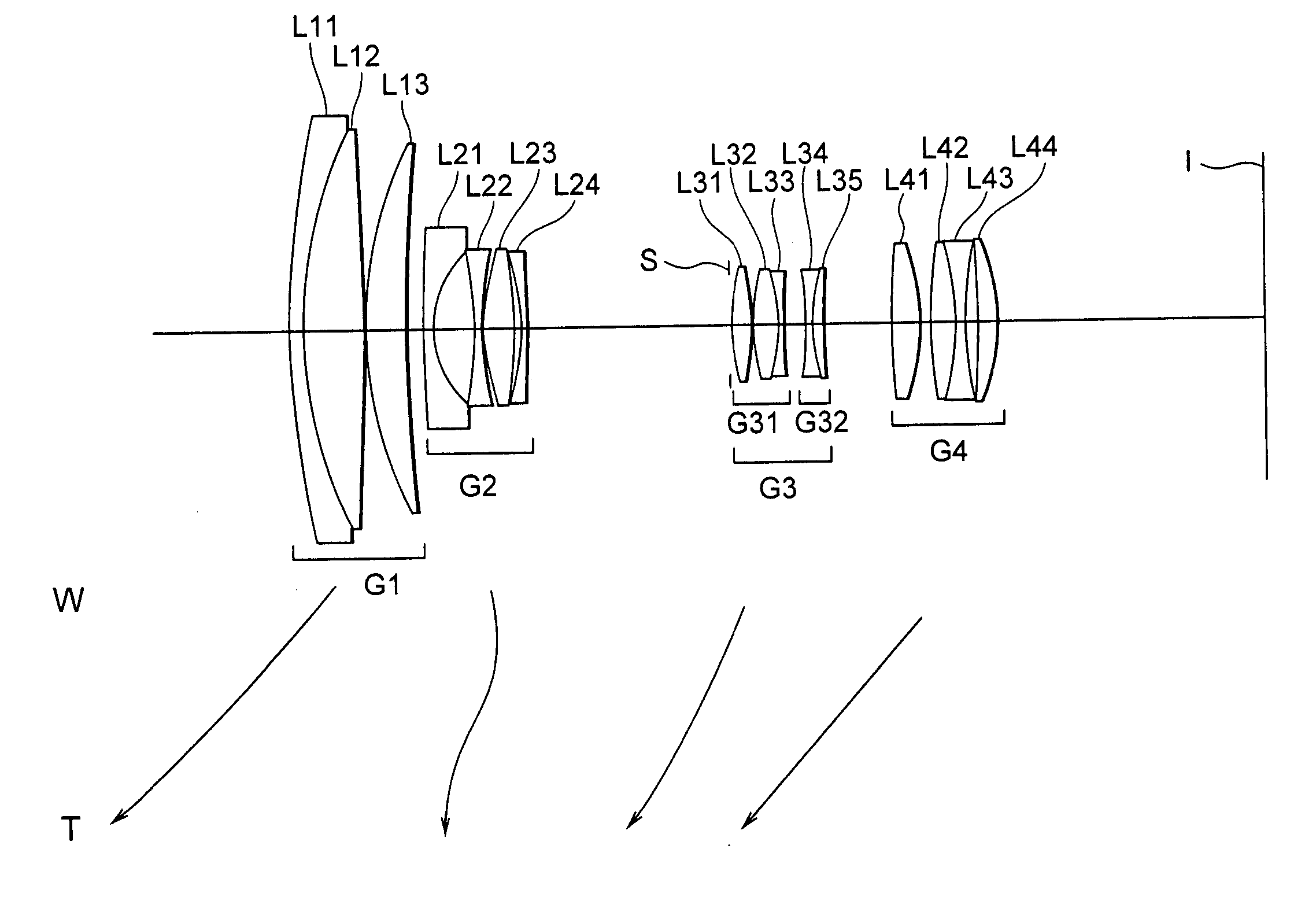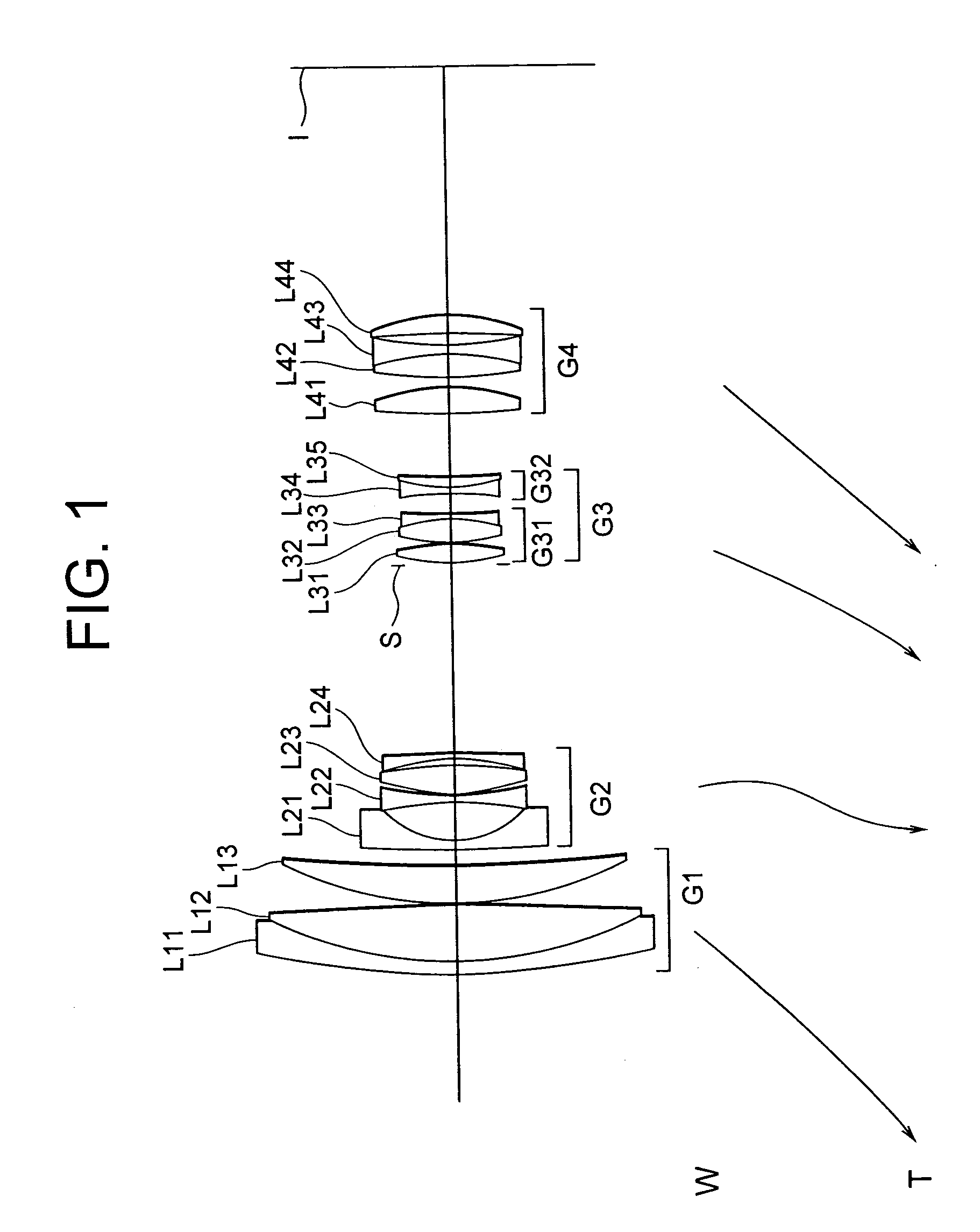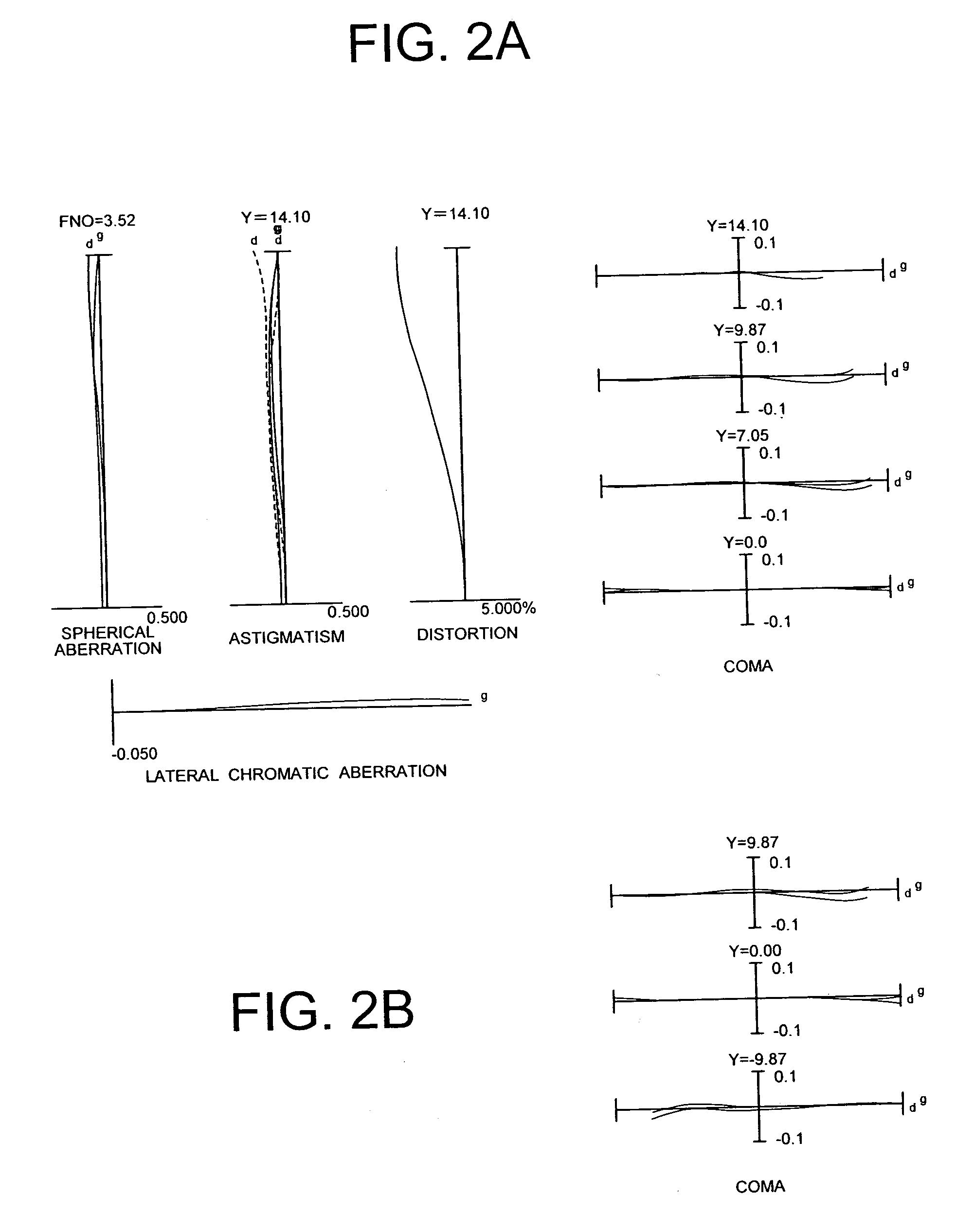Zoom lens system with vibration reduction
- Summary
- Abstract
- Description
- Claims
- Application Information
AI Technical Summary
Benefits of technology
Problems solved by technology
Method used
Image
Examples
example 1
[0130]FIG. 1 is a diagram showing the lens configuration of a zoom lens system with a vibration reduction according to Example 1 of the present invention.
[0131] The zoom lens system with a vibration reduction according to Example 1 is composed of, in order from an object, a first lens group G1 having positive refractive power, a second lens group G2 having negative refractive power, an aperture stop S, a third lens group G3 having positive refractive power, and a fourth lens group G4 having positive refractive power.
[0132] In the zoom lens system with a vibration reduction according to Example 1, when a state of lens group positions varies from a wide-angle end state to a telephoto end state, the first lens group G1, the third lens group G3, and the fourth lens group G4 move to the object and the second lens group G2 moves such that a distance between the first lens group G1 and the second lens group G2 increases, a distance between the second lens group G2 and the third lens grou...
example 2
[0157]FIG. 5 is a diagram showing the lens configuration of a zoom lens system with a vibration reduction according to Example 2 of the present invention.
[0158] The zoom lens system with a vibration reduction according to Example 2 is composed of, in order from an object, a first lens group G1 having positive refractive power, a second lens group G2 having negative refractive power, an aperture stop S, a third lens group G3 having positive refractive power, and a fourth lens group G4 having positive refractive power.
[0159] In the zoom lens system with a vibration reduction according to Example 2, when a state of lens group positions varies from a wide-angle end state to a telephoto end state, the first lens group G1, the third lens group G3, and the fourth lens group G4 move to the object and the second lens group G2 moves such that a distance between the first lens group G1 and the second lens group G2 increases, a distance between the second lens group G2 and the third lens grou...
example 3
[0174]FIG. 9 is a diagram showing the lens configuration of a zoom lens system with a vibration reduction according to Example 3 of the present invention.
[0175] The zoom lens system with a vibration reduction according to Example 3 is composed of, in order from an object, a first lens group G1 having positive refractive power, a second lens group G2 having negative refractive power, an aperture stop S, a third lens group G3 having positive refractive power, and a fourth lens group G4 having positive refractive power.
[0176] In the zoom lens system with a vibration reduction according to Example 3, when a state of lens group positions varies from a wide-angle end state to a telephoto end state, the first lens group G1, the third lens group G3, and the fourth lens group G4 move to the object and the second lens group G2 moves such that a distance between the first lens group G1 and the second lens group G2 increases, a distance between the second lens group G2 and the third lens grou...
PUM
 Login to View More
Login to View More Abstract
Description
Claims
Application Information
 Login to View More
Login to View More - R&D
- Intellectual Property
- Life Sciences
- Materials
- Tech Scout
- Unparalleled Data Quality
- Higher Quality Content
- 60% Fewer Hallucinations
Browse by: Latest US Patents, China's latest patents, Technical Efficacy Thesaurus, Application Domain, Technology Topic, Popular Technical Reports.
© 2025 PatSnap. All rights reserved.Legal|Privacy policy|Modern Slavery Act Transparency Statement|Sitemap|About US| Contact US: help@patsnap.com



